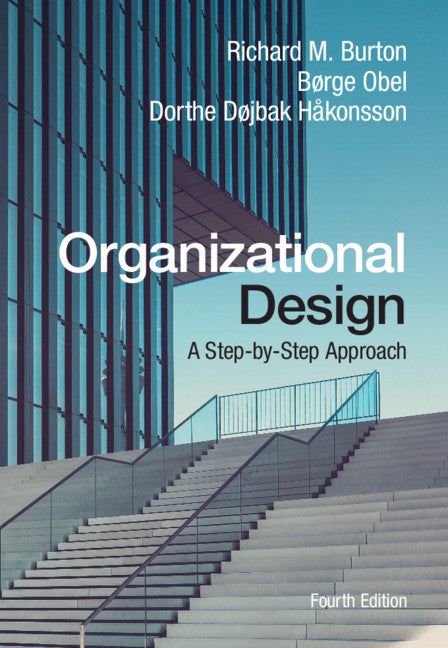Freshly Printed - allow 8 days lead
Couldn't load pickup availability
Organizational Design
A Step-by-Step Approach
Now in its fourth edition, this comprehensive textbook uses a multi-contingency model to communicate the fundamentals of traditional and new organizational forms.
Richard M. Burton (Author), Børge Obel (Author), Dorthe Døjbak Håkonsson (Author)
9781108493284, Cambridge University Press
Hardback, published 16 July 2020
284 pages, 10 b/w illus. 26 colour illus. 17 tables
25 x 17.4 x 1.8 cm, 0.67 kg
'Burton, Obel and Håkonsson have written here the definitive guide to organization design, comprising both partitioning of tasks and their coordination to realize an organization's goals. Their information-processing framework is ageless, tried and true, incorporating real examples of contemporary transformations and variations that build upon it – including the mix of human and machine agents, digitalization of work, and new forms of organizing. For anyone looking to do a deep dive and to improve their organization's performance, the authors provide a step-by-step approach for diagnosis (of fit or misfit) and design (i.e., taking action to realign the organization) that is holistic, realistic and effective.' Samina Karim, Professor, Entrepreneurship and Innovation Group, D'Amore-McKim School of Business, Northeastern University
Now in its fourth edition, this is the definitive step-by-step 'how to' guide to designing an organization. Building on information processing theory, the book proposes a holistic, multi-contingency model of the organization. This textbook communicates the fundamentals of traditional and new organizational forms, including up-to-date analysis of self-organizing, boss-less, digital, and sustainable organizations. Providing a framework for the practical implementation of organizational design changes, the authors break the process down into seven basic steps: (1) Assessing Goals, (2) Assessing Strategy, (3) Analyzing Structure, (4) Assessing Process and People, (5) Analyzing Coordination, Control and Incentives, (6) Designing the Architecture, and (7) Implementing the Architecture. Each step connects with one of the nine interdependent components of the multi-contingency model, and the authors also provide a logical query process for approaching each of these components. This is an ideal guide for managers or executives interested in assessing their organization and taking steps to redesign it for success, as well as for MBA and executive MBA students looking for an introduction to organizational design.
Step 1. Getting Started: 1. Assessing the scope and goals of the organization
Step 2. Assessing the Strategy: 2. Strategy
3. Environment
Step 3. Analyzing the Structure: 4. Traditional configurations of the firm
5. New organizational forms?
Step 4. Assessing Process and People: 6. Work, task design and agents
7. Leadership and organizational climate
Step 5. Analyzing Coordination, Control, and Incentives: 8. Coordination and control
9. Incentives
10. Designing the structure and coordination
Step 6. Designing the Architecture: 11. Designing the architecture and the sequence of change
Step 7. Implementing the Architecture: 12. Implementing the change: who should do what when?
Subject Areas: Business & management [KJ], Organization & management of education [JNK]


